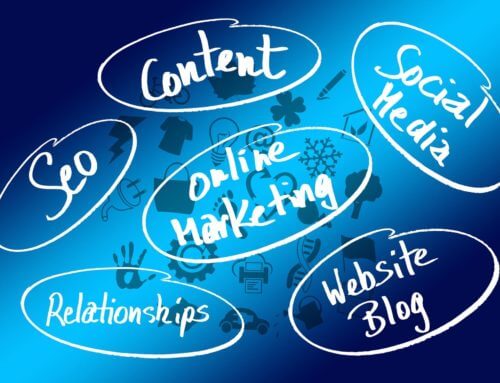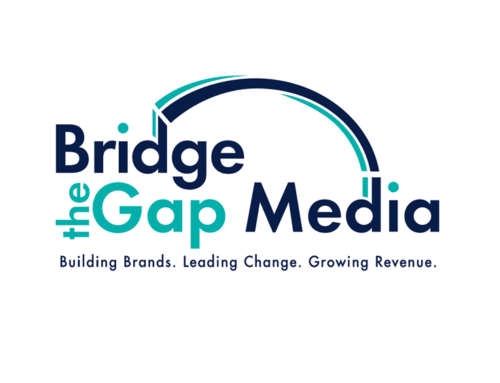 As our 12th Anniversary has just passed, we reflect on the evolution and transformation of digital marketing from the time of BTG’s founding in 2009 to 2021. A lot has changed! Today there is a lot more to understand and keep up with, but the good news is we have better tools and functionalities to help deliver exceptional marketing campaigns and growth strategies.
As our 12th Anniversary has just passed, we reflect on the evolution and transformation of digital marketing from the time of BTG’s founding in 2009 to 2021. A lot has changed! Today there is a lot more to understand and keep up with, but the good news is we have better tools and functionalities to help deliver exceptional marketing campaigns and growth strategies.
Websites and SEO
Your website is the foundation for your business. Years ago that might have been just a statement, but today it is a fact. Companies that want to grow must have a great website as a foundation for your company’s brand image!
Website development practices evolve based on Google ranking updates and user preference. One of the significant differences between now and 12 years ago is the universal use of mobile devices to access the internet today. Google announced mobile-first indexing in 2018, which actually started in March of 2020. When we started our company in 2009, websites were built to deliver content to users on their desktops. Today, your website needs to be mobile-friendly with content that is adaptable to all devices, whether it be a desktop, notebook, tablet, or cell phone. Responsive designs were recommended a few years ago, but now they are mandatory.
Video and Photography. The ability to showcase products and services with video and photography has been a huge change over the last decade. When we started in 2009, image and video files were so large users could not open them. Websites were, for the most part, text only. Today with changes in technology, we have the ability to showcase thousands of images and videos to help promote company products and services to generate leads.
Web Security is another significant change. If you are not running a secure site, most website browsers will not show your site, or will display a message that the site users are about to enter is not safe! In 2009, most websites were HTTP, but as of 2014, an HTTPS secure site became a requirement to rank on Google.
Search Engine Optimization best practices are constantly evolving. SEO originally was almost a “hack” to get more website visits. Keyword stuffing and buying links were typical practices. Google caught on fast, and now SEO requires sophisticated keyword research, consideration of search intent, and links must be made to and from credible and relevant sites.
From Brochure to Interactivity One of the newer website developments is user experience. In the beginning, websites were not much more than brochures. Sites need to be interactive, integrated with social media and email, and easily navigated. Also highly important today? Speed.
Social Media
In 2008, Facebook had just surpassed Myspace as the most visited social media site. In 2009, the month BTG launched, Facebook had 300 million users. Today, there are 2.895 billion. Twitter had 58 million users in 2009 and today has 206 million. In 2021, Facebook remains the most popular social media platform, with Instagram, owned by Facebook, close behind, along with Youtube. Tik Tok’s popularity is growing but, 70% of its users are under 40.
LinkedIn had 37 million users in 2009 and has 774 million users today. Studies show at least 80% of leads sourced from social media come from LinkedIn alone. This is because on LinkedIn there is little appetite for personal sharing, leaving room for relevant B2B information. This is especially valuable when you consider 40 million LinkedIn users are in decision-making positions and 91% of marketing executives list LinkedIn as the top place to find quality content. LinkedIn was always a networking space but was not always the place to find great content. In 2012 LinkedIn launched its publishing platform for users to write original content, supplementing the sharing of links back to content on websites.
In 2010, Facebook used to be all about the “wall.” By 2011, the “timeline” took over. Prior to 2009, all posts were shown in chronological order. In 2009, there was the first major algorithm change with posts at the top of the page being the ones with the most engagement. In 2010, most posts focused on people’s personal lives. But in 2015, shareable links resulted in feeds becoming more news-centered. Companies have been on Facebook since the beginning, with Pages being launched in 2008 to incentivize business owners to join, in the hopes they may pay for ads later. But, it wasn’t until 2014 that Facebook launched Facebook Business Manager to give marketers an edge.
Instagram, bought by Facebook in 2012, started very simple. Stories were added in 2018 with additional editing features incorporated to compete with Snapchat and Reels were added in 2020 to compete with Tik Tok. And, Instagram shopping emerged in 2017.
Probably twitter’s most notable update was when they increased character count from 140 to 280 in 2017.
The age of social media users has continued to increase as well. In 2009, 78% of people 18-29 said they used social media at least once, while only 44% of those 20-49, 21% of those 50-64, and 6% for those 65+ said they did. Compare that with 2021, where 84% of those 18-29, 81% of those 20-49, 73% of those 50-64, and 45% of those 65+ used social media at least once.
Email Marketing
Over 290 billion emails are sent daily with almost 350 million expected by the end of 2023. Email marketing has been around for about as long as email itself, but it has gotten a lot more sophisticated. In 2010 people were just starting to receive emails on their phones, but by 2012 almost half of all marketing emails were opened on mobile devices. By 2013, 33% of email subscribers used Gmail which had specific rules for deliverability. Marketers had to adjust to ensure their emails made it into inboxes. In addition, in 2012 only 27% of all marketing emails were opened on mobile devices but by 2014 it was 42% and now, it is almost 60%, making the use of responsive email designs vital, with shorter subject lines and larger call to action buttons.
There were not easy HTML capabilities to put together attractive email campaigns before companies like Mailchimp and Constant Contact launched, making emails more interactive and more integrated than ever. But now that more marketing emails are being sent than ever before it’s important to make your campaigns stand out. Personalization, automation, segmentation, and A/B testing are crucial to set your business apart.
But email marketing is changing. A recent Apple update focused on privacy is impacting the open rates in reports. This makes understanding and utilizing Google Analytics even more important. In addition, Intuit recently purchased Mailchimp. We won’t see the results of this for some time. One thing we do know is email marketing works. On average, every $1 you spend on email marketing generates a return of over $50.
Content Marketing
Blogging dates back to the late 90s but by 2009 content marketing still basically didn’t exist. User-friendly website builders, the rise in social media, and the desire to constantly share content brought blogging into marketing strategies. By 2018, half of the top 200 Fortune 500 companies had corporate blogs. By 2020, companies with blogs were receiving an average of 67% more leads monthly than websites without blogs.
Bu the biggest difference between 2021 and between 2009-2015 or so, is how many platforms exist for different types of content marketing. Now there are vlogs, webinars, live audio-only chatrooms like Clubhouse, and of course podcasts which have grown exponentially in the last decade-plus. In 2008 only 9% of people said they had listened to a podcast within the past month. In 2021, the number is up to 41%, with 38% having listened to a podcast in the last week.
Finally, there is who is creating content. Not all content is pulled together in-house. Along with outsourced marketing, there is also the increase in influencer culture, which has blown up due to social media platforms and usage.
Branding
The most basic branding practices survive the test of time. Consistency has always been important to brand positioning, but in 2021, with so many more mediums, platforms, and outlets to manage, consistency has never been more important.
Click here to see how some of the most popular websites on the internet have evolved over 10 years.





